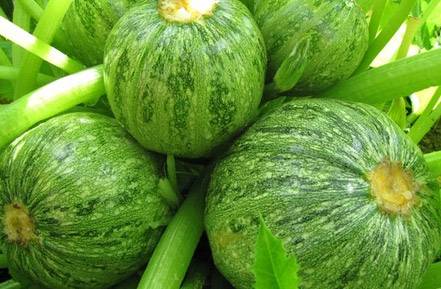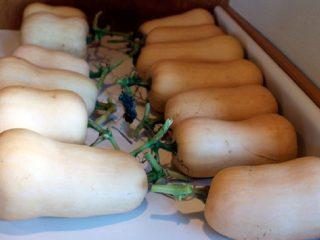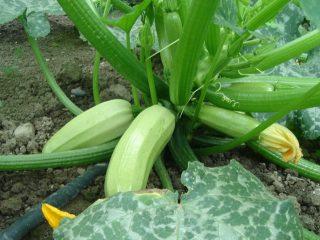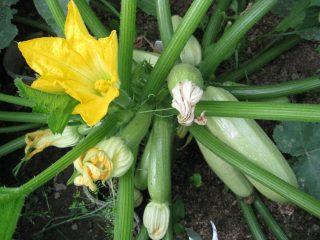Thanks to breeders, today's gardeners have a huge selection of seeds for squash and other crops. If earlier all zucchini were as one white and elongated, today their appearance can be very surprising. In addition to exotic zucchini shades, interesting forms of this vegetable can also be found on the plots. A striking representative of the varieties round shape is the Zucchini Ball.
Variety characteristics
The ball is an early maturing variety with compact, non-branched bushes. Its dissected leaves are pale green with slight mottling. The description of the zucchini of this variety is hidden in the name. Like a ball, it has a spherical shape. There is a slight ribbing at the base of the squash. Its green skin is covered with small dots several shades lighter. Zucchini can grow on average from 0.8 to 2.1 kg. The variety is characterized not only by an excellent presentation, but also by excellent taste. Zucchini Ball seems to be specially created for stuffing. The dry matter in them will be from 4 to 5.5%, and the sugar will not exceed 2.6.
A distinctive feature of this variety is its cold resistance. The Ball's disease resistance can be characterized as average. He has immunity, but as a preventive measure, it is better to treat plants from the most basic diseases.
Growing recommendations
The best areas to land the Ball are sunny and sheltered areas. Wherein? he is not particularly picky about the soil. But it will grow better on sandy loam and loamy soils, pre-fertilized with mineral and organic fertilizers.
During this time, fertilizers will be able to decompose sufficiently and saturate the earth with useful substances.
Zucchini variety The ball can be planted:
- Through seedlings, which begin to cook from the beginning of April.
- Through planting seeds in open ground. With this method, the seeds are planted to a depth of 3 cm. The seed planting period is from the beginning to mid-May.
Harvesting takes place from July to September.
This variety has an average resistance to common zucchini diseases such as powdery mildew and anthracnose. Therefore, when the first signs of the disease appear, it is recommended to process:
- For powdery mildew, a colloidal sulfur suspension should be used. Re-processing is done in 2-3 weeks.
- With anthracnose, plants are sprayed with Bordeaux liquid, copper oxychloride or ground sulfur.










